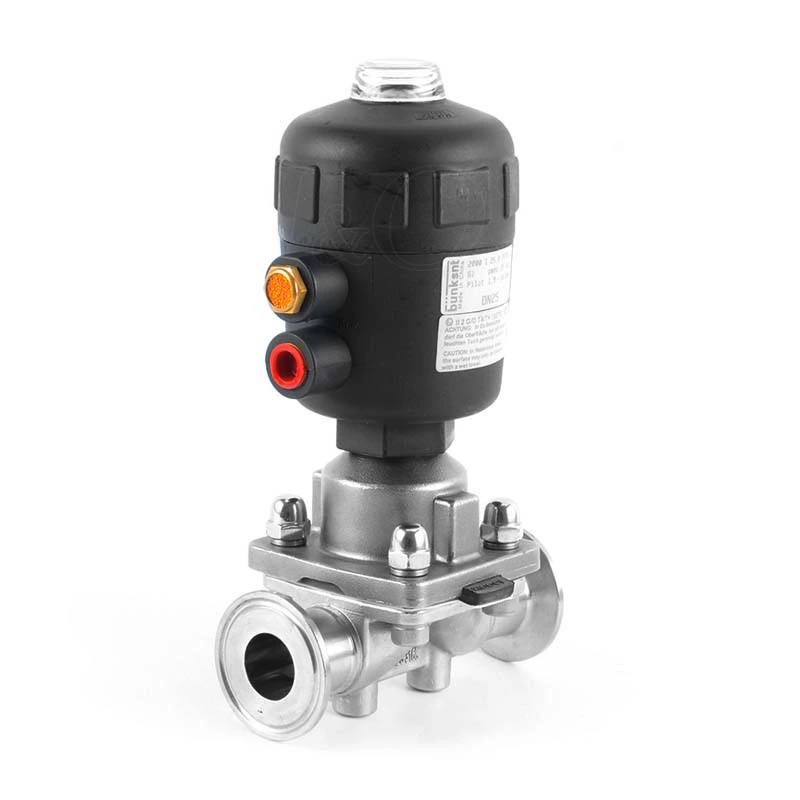What Are The Solutions To The Problem Of Sanitary Diaphragm Valve Ventilation Not Working?
Sanitary Diaphragm Valve is suitable for fluid control systems in fluid-related industries such as pharmaceuticals, biology, dairy products, cosmetics, food, and electronics. So what are the solutions to the problem of sanitary diaphragm valves not working?
There are a total of 8 sanitary diaphragm valves with the same working conditions. After installation, the air source was connected, and the pressure was 4.5 kg. One of the pneumatic sanitary diaphragm valves did not move. Later, the air source pressure was increased to 8 kg. The sanitary diaphragm valve found that when the air source was input, no gas was discharged from the exhaust hole. The preliminary analysis was that the exhaust hole was blocked. Later, the cylinder head was opened and it was found that there was foreign matter in the cylinder of the sanitary diaphragm. It turned out that the on-site personnel accidentally pushed the dust cover into the cylinder piston cavity during installation, sealing the exhaust hole, resulting in the inability to discharge gas, the piston was blocked, and the valve did not move.
The advantages of sanitary diaphragm valves are that they have many advantages such as no dead angle, easy cleaning, no leakage, low maintenance cost, and easy operation. Materials with higher viscosity can easily be replaced by products with high cleanliness requirements such as ball valves and butterfly valves to achieve automatic and manual control.
